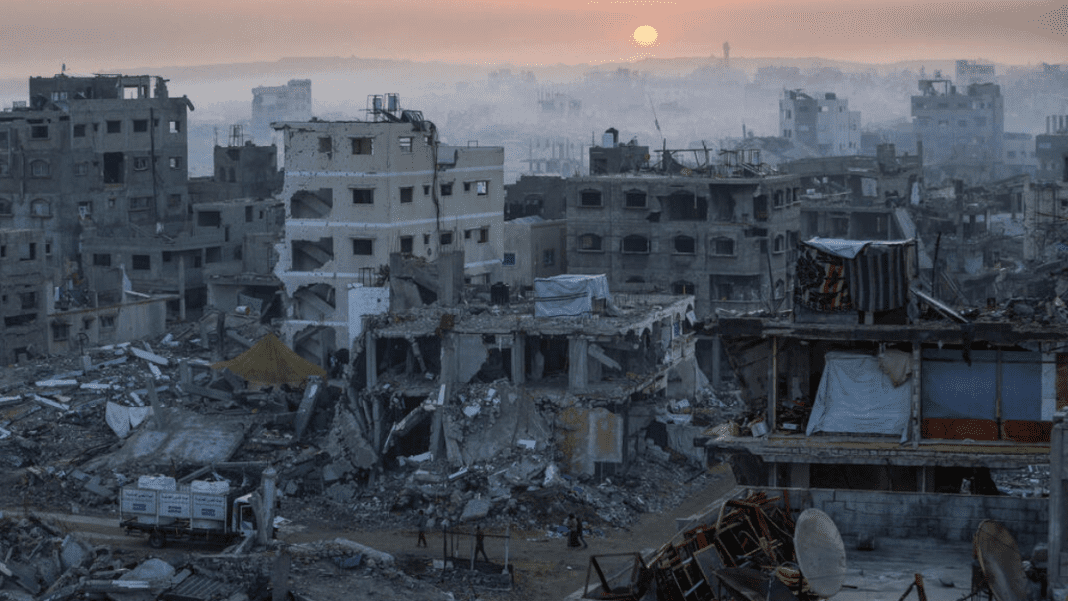A fragile quiet in the Gaza Strip was shaken on Wednesday afternoon after a sudden burst of gunfire marked a ceasefire breach that had been in place since early October. According to the Israeli military, armed Hamas members opened fire on Israeli soldiers near Khan Younis, along a zone known as the “yellow line.” This area serves as a narrow buffer meant to keep forces apart and prevent direct clashes.
Rising Tensions After Sudden Ceasefire Breach
Israeli troops operating in southern Gaza came under attack, but none of the soldiers were hurt. The military quickly called the shooting a “clear ceasefire breach” that violated the agreement meant to stop fighting and allow humanitarian aid to move more freely.
In response to the ceasefire breach, the Israeli military carried out several airstrikes across Gaza, focusing many on Gaza City’s Zeitoun neighborhood. Military leaders said they guided the strikes with intelligence to prevent further attacks.
Austrian intelligence busts Hamas-linked terror network planning attacks across Europe
The military killed two key Hamas figures in these strikes. One led fighters in Zeitoun, and the other managed naval operations inside Gaza. They targeted both because of their involvement in activities that posed ongoing threats.
Palestinian reports said that airstrikes also hit Khan Younis, Shijaiyah, and an area near Palestine Square in central Gaza City. Local officials reported at least 25 deaths linked to the strikes, though the final number could change as communication in parts of Gaza remains limited.
Earlier Incident Highlights Growing Ceasefire Breach Risks
Hours before the gunfire near Khan Younis, another serious incident occurred in northern Gaza. The Israeli military said soldiers from a combat unit observed armed men moving across the yellow line toward their position. The suspects reportedly approached in a manner that suggested an immediate threat. Israeli troops opened fire and killed one of them.
This incident marks another potential ceasefire breach, raising concern that the temporary calm could be unraveling. Each clash underscores how fragile the ceasefire remains, with both sides accusing the other of violations.
US DOJ Seizes Hamas Crypto in Major Anti-Terror Crackdown
The violence comes as the United Nations Security Council recently approved a plan by the United States to help end the conflict in Gaza. While international diplomats discuss next steps, the ceasefire breach on the ground illustrates the challenges of maintaining peace in the territory.
Since Israeli forces withdrew from certain areas after the initial ceasefire, Hamas has returned to governing parts of Gaza west of the yellow line. With no alternative authority in place, the group collects taxes, manages traffic, and oversees aid delivery. Some residents say crime has dropped under Hamas’ renewed patrols, even though the ceasefire breach earlier in the day reminded them that danger remains.
Territory Divided as Power Shifts on the Ground
Observers say Hamas controls roughly 47% of the Gaza Strip, mostly west of the yellow line, while Israeli forces hold the remaining 53%. Although Hamas controls a smaller area, it includes the majority of Gaza’s nearly two million residents, who face crowded neighborhoods, damaged infrastructure, and limited resources.
Some Western officials warn that the slow progress on the peace plan could leave Gaza divided for years. Humanitarian groups caution that ceasefire breaches like Wednesday’s incident can disrupt aid distribution and make recovery more difficult.
Israel–Hamas truce under strain after Red Cross returns eight Israeli hostage bodies
The sudden attacks and subsequent strikes highlight the fragility of the current ceasefire. A single breach can undo weeks of negotiations and intensify the humanitarian crisis. For now, the Israeli military says its troops in the south will remain alert and act to remove any threats.
As night fell on Wednesday, the ceasefire technically remained in place, but the trust needed to maintain it has been shaken by repeated breaches. Both sides face growing questions about whether calm can return to the region after the latest violence.

